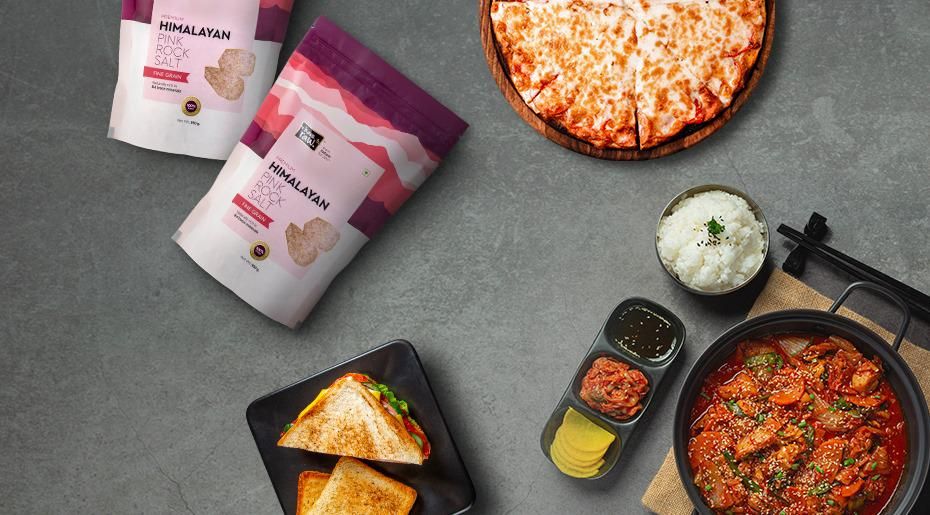But we are still not well aware of the information on how much sodium one should consume. Salt is one of the biggest mediums of sodium in our body. It contains 60% chloride and 40% sodium. Sometimes, we might feel that our food is less salty so we should add more salt to consume tastier food, but that's not good, this can, in fact, be very risky.
Our food, with minimal amounts of salt, still contains the required rate of sodium. It is said that the human body should not intake more than 2400 milligrams of sodium per day. Hence, the aim should be to have up to 1500 milligrams per day only to avoid crossing the maximum mark. If at all, it crosses, there will be high chances of suffering from High BP, Cardiovascular or calcium-related diseases etc.
Sodium is naturally said to be found in most of our foods. It will be surprising to know that some foods are sources of top sodium in our diet. These are:
- Pizza
- Sandwiches
- Cheese
- Chicken
- Burritos / Tacos etc.
Mostly, you will find processed food with the majority of sodium content. Next time when you pick these packets, make sure that you check the content thoroughly and then add the salt any further. However, Pink Himalayan Rock Salt can be a better substitute according to research because it contains relatively more minerals and health benefiting qualities. This salt, even if you add a pinch of it, will give you enhanced flavour, saltier taste and giving a less urge to add more salt. You will also find an uplifted aesthetic appeal whenever you sprinkle it on your meals such as salads, buttermilk etc. Also, some additional tips for you to reduce sodium consumption in your diet can be as follows:
- Make your own food: This is the only and the best way to reduce your junk food consumption, specially packed foods. This can be anything, ready to make instant products, mixes etc. When you cook fresh home food, you put in fewer extra flavour enhancers. This will reduce your sodium consumption naturally and also improve your health in the long run.2.
- Eliminate excess salt from your snacks: You can switch to no-salt or less-salt nuts, chips, seeds etc. as a healthy substitute to your diet. You can also opt to have celery, carrots, apples, oranges, unsalted popcorns, whole wheat pasta/ bread ( don't add salt in these while preparing any dish) since they have relatively low sodium levels. Some of them also claim to have zero sodium, you can check out the labels beforehand and pick the products as per your requirement.
- Try to cut your portions: If you have a habit of munching on snacks quite frequently, then maybe you should consider cutting on your portion size. Less intake of unhealthy food automatically will reduce your sodium levels. You can rather just cook little portions of a meal at home and eat well and avoid eating out more while on an outing.
- Try adding flavours without any sodium: Another interesting way to limit the sodium intake in your diet can be to limit the amount of regular or table salt that you add for flavour and add a pinch of pink salt along with seasonings with lots of herbs and spices in it. This will be the perfect way to fulfil your salt cravings but also manage the same with extra flavour and fewer health risks.
To sum up, you just have to take care of these small things in your lifestyle to avoid overconsumption of sodium:
- Choose fresh products instead of any processed ones.
- Compare the nutrition labels well to find out food with less sodium content.
- For protein foods, choose either frozen or fresh poultry instead of any processed options.
- For dairy, pick only fat-free or low-fat products.
- For seasonings, try to opt for salt-free ones. Use chopped veggies, peppers, lime juice, herbs and spices for a better flavour.




















 sunrise
StableDiffusion
sunrise
StableDiffusion
 bonfire friends
StableDiffusion
bonfire friends
StableDiffusion
 sadness
StableDiffusion
sadness
StableDiffusion

 purple skies
StableDiffusion
purple skies
StableDiffusion

 true love
StableDiffusion
true love
StableDiffusion
 My Cheerleader
StableDiffusion
My Cheerleader
StableDiffusion
 womans transformation to happiness and love
StableDiffusion
womans transformation to happiness and love
StableDiffusion
 future life together of adventures
StableDiffusion
future life together of adventures
StableDiffusion





















